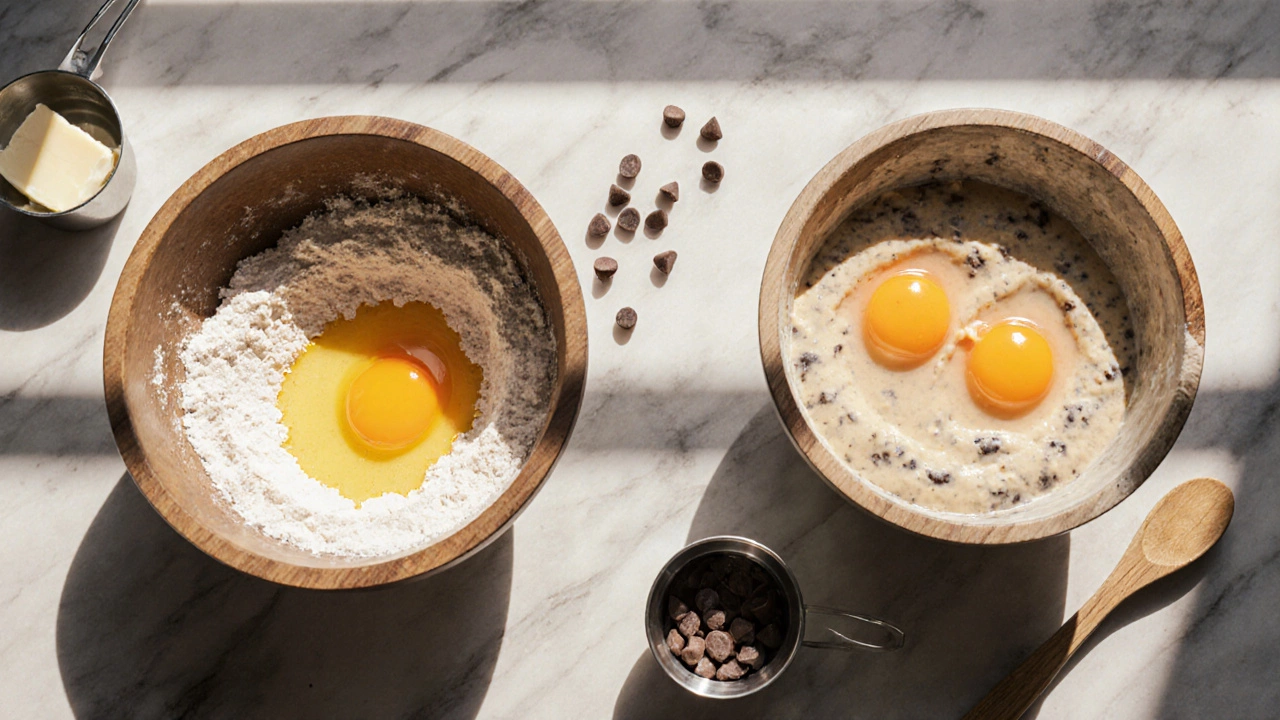How Adding a Second Egg Changes Your Cookies - What to Expect
Discover how adding a second egg changes cookie moisture, spread, texture, and flavor, plus tips to balance or fix over‑egged batches.
When working with egg substitution, the practice of swapping eggs for other ingredients that bind, leaven, or add moisture. Also known as egg replacer, it lets you keep recipes tasty while catering to vegans, allergy‑sensitives, or anyone cutting cholesterol. egg substitution opens the door to a whole range of pantry hacks that mimic the chemistry of eggs without the actual bird product.
One of the easiest starts is flaxseed meal, a ground seed mixed with water to form a gel that mimics egg’s binding power. Use one tablespoon of ground flax mixed with three teaspoons of water for each egg you’re replacing. Another pantry hero is applesauce, unsweetened puree that adds moisture and a subtle sweet note, ideal for cakes and muffins. For richer, custard‑like dishes, silken tofu, blended tofu that supplies both binding and a creamy texture works wonders—about a quarter‑cup per egg. Commercial products like “Ener‑G” or “No‑Egg” are pre‑blended powders designed for convenience; they usually contain starches, leavening agents, and gums to cover most baking needs.
These substitutes each bring a unique attribute: flaxseed adds fiber, applesauce boosts moisture, tofu offers protein, and commercial mixes give consistent rise. Picking the right one depends on what the recipe demands—binding, leavening, moisture, or all three.
Why go through the trouble? Vegan baking, the art of creating desserts without any animal products literally requires egg substitutes. Allergy‑friendly cooking also leans on these swaps, especially for people with egg‑protein sensitivities. Lowering cholesterol intake is another driver—many home bakers love the health edge without sacrificing texture. In short, egg substitution enables a broader audience to enjoy classic treats.
Choosing the right replacer also means looking at the surrounding ingredients. When you pair a flax‑based gel with gluten‑free flour, alternative grain blends that lack the gluten structure of wheat, you’ll often need extra binding power, so flax shines. For fluffy cakes that rely on air incorporation, a commercial egg‑free powder with built‑in leavening is a smart pick. And if you’re making dense brownies or fudgy bars, applesauce can keep them moist without making them soggy.
All these options show up across our recipe collection—from dairy‑free cheesecake tricks to vegan candy experiments—so you’ll see egg substitution in action no matter what you’re craving. Below, you’ll find a curated list of articles that dive deeper into specific swaps, troubleshooting tips, and creative ways to keep your baked goods delicious without a single egg.

Discover how adding a second egg changes cookie moisture, spread, texture, and flavor, plus tips to balance or fix over‑egged batches.